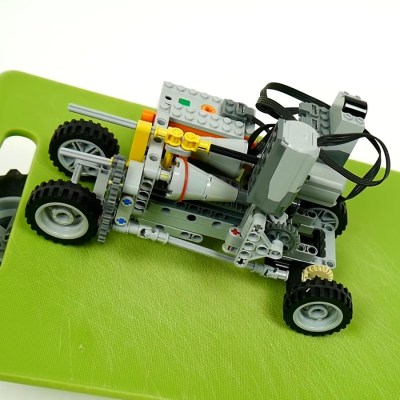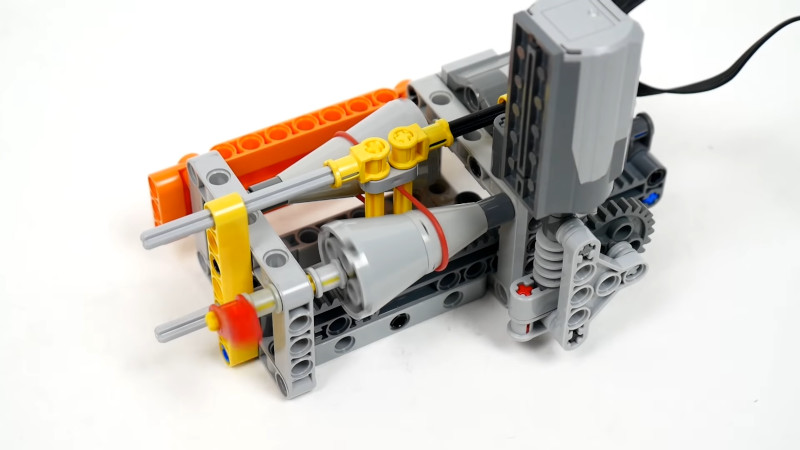The first continuously variable transmission fitted to an automobile actually has its roots in the late 19th century, though the technology has only become popular in the last two decades or so. While a relatively complex technology in its modern automotive form, it’s still possible to illustrate the basic principles with everyone’s favourite mechanical learning toy – Lego.

The build consists of a Lego motor driving the transmission’s input shaft, upon which a cone is mounted. A similar cone is mounted on the output shaft, and a rubber belt stretched between the two. With the cones mounted in opposing directions, the gear ratio can be continually varied by changing where upon the cones the belt rides. By riding on the small diameter section of the input cone, the belt correspondingly rides on the large diameter section of the output cone, leading to a slower, high torque output. By sliding the belt to the other end of the cone, the ratios are reversed, leading to high output speed with less torque.
The demonstration works somewhat differently than modern automotive models, but the basic concept is the same. It’s also limited in its torque transfer ability by the coefficient of friction of the plastic Lego parts. Despite this, it’s a quick way to illustrate the mechanisms at play, and where some of the common losses are in such a system. If you prefer your gearboxes of a more classic sequential design, we’ve seen those too, of course. Video after the break.
















Needs some rollers along the cone pulleys to pinch the silicone lego band…
Also, Nice!
I like the little dig at Top Gear – rather slow ….
I winder if coating the cones in a rubber paint would help reduce the slip under load ?
I remember my aunt having one in her dutch DAF
“dutch DAF”
it was from Nederland
The variomatic I think they called it in the UK. From what I recall of diagrams showing how that one worked, I think it was closer to this example than modern ones are.
Huub van Doorne, one of the DAF brothers, developed the technology. The first mass-production car to use a CVT was the 1958 DAF 600 small sedan built in the Netherlands. Also jokingly known as the “suspender belt drive” this Variomatic transmission was used in several vehicles built by DAF and Volvo until the 1980s
Proud ex owner of a Volvo 340 -series (based on DAF technology). That transmission was magical. At traffic lights I could out-accelerate any other car (including Porsches, serious) – at least until 60 km/h. After that, the joke was over, of course. But great fun it was.
And let’s forget the legendary DAF races in reverse gear… they could go just as fast in both directions. Hilarity ensued!
Unfortunately, American car companies badly suffered from the “not made here” syndrome and did not take up DAF’s offer to license the technology.
NOT forget… let’s NOT forget (stupid comment system doesn’t allow edits)
I kinda sorta liked how they used two CVT’s and a 90 degree angle gearset as basically both differential and gearbox.
Or transaxle according to some.
Funny to think of a DAF has something uncommon in common with a last gen Corvette.
These have been popular with Meccano hobbyists too,
https://m.youtube.com/watch?v=uLrz3oqw0oc
and variations
https://selmec.org.uk/models/2194-variable-speed-drive-mechanism
and
https://m.youtube.com/watch?v=5_Cr2K0WHUE
CVT has been used for many years in the agricultural industry. Namely in harvesters of grain, that I’ve been involved with. In ground drives & machine drives.